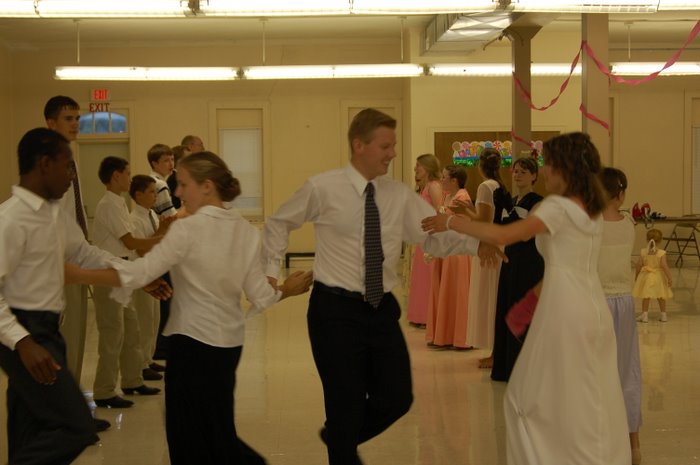A lot of people have asked us where we find music for our dances? How do we know that it works?
Well, first off the music has to break down into the right phrases. It needs to be in 4/4, 2/4 or there are some possibilities in 6/8 (if it is played in a fast 2), there are quite a few jigs, however that won't work because they are for Irish step-dancing and will not give the dancers the straightforward beat they need.
Anyway, you need 64 beats before the song repeats itself. Any typical Irish tune played straight works this way; they're written for dancing! So if the song is in 2/4 (or 6/8) it'll be 32 measures, or 16 measures of 4/4.
The song breaks down more than that, though. When you're writing out a dance you'll write it out with parts A1, A2, B1, B2. It's not arbitrary or made up; it goes with the music. There will be a 16 beat phrase (typically made up of two 8 beat phrases) followed by a repeat of that 16 beat phrases with a slightly different ending leading into the next section. Those two phrases are A1 and A2. Now we have two more 16 beat phrases (made up of two 8 beat phrases) that are once again very similar. That's B1 and B2. That's the song. Now it will repeat.
It's surprisingly easy to find music like this. When we started out, we really didn't have a clue about any of this, but some of it came naturally, and some of it we figured out through random websites, and whatnot.
We started out using just a couple of CDs, Zan McCleod and Martin Hayes mostly. We moved on from there. Now we use quite a bit of Sharon Shannon, because she's fantastic (as long as you like accordian). I've said before that I recommend Choose Your Partners. The beat is pretty much given to the dancers because of the bass on the down-beat and the piano chords on the upbeat. That's what you really want for teaching dance to beginners. Bluegrass tunes will often work at well; bluegrass is not really all that different from traditional Irish music, so you can keep your ears open for music of this sort that will work. In general, the more variety you have the better.
Although I've said that the music needs to be simple and clear, we occasionally break this rule ourselves. On a dance such as the Posties Jig that can be danced in time, but never is, we have stopped being picky. We will dance the Posties Jig to anything upbeat, regardless of how clear the beat is; it's more or less just background music.
Also if you're dancing a major set dance such as The Virginia Reel, The Gothic Dance, or Karissa's Cowboy Reel, the beat should be clear but don't concern yourself with finding music that fits the A-B pattern. It's unnecessary because these dances are longer or shorter depending on the number of couples or how they're called.
Friday, February 20, 2009
Subscribe to:
Post Comments (Atom)

No comments:
Post a Comment